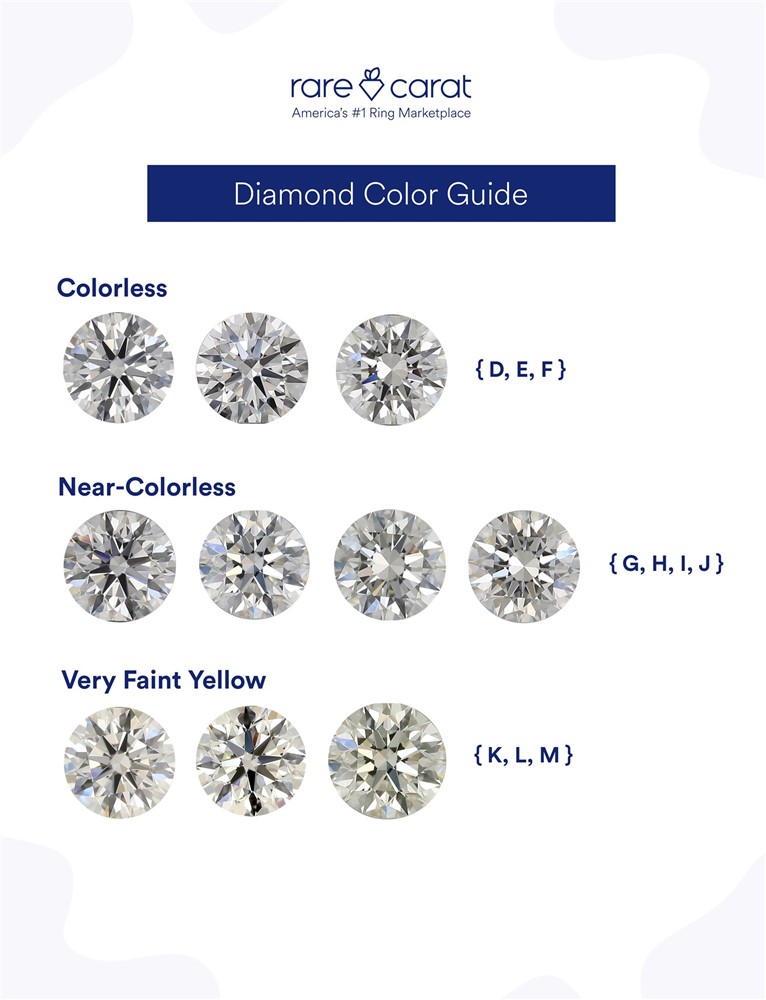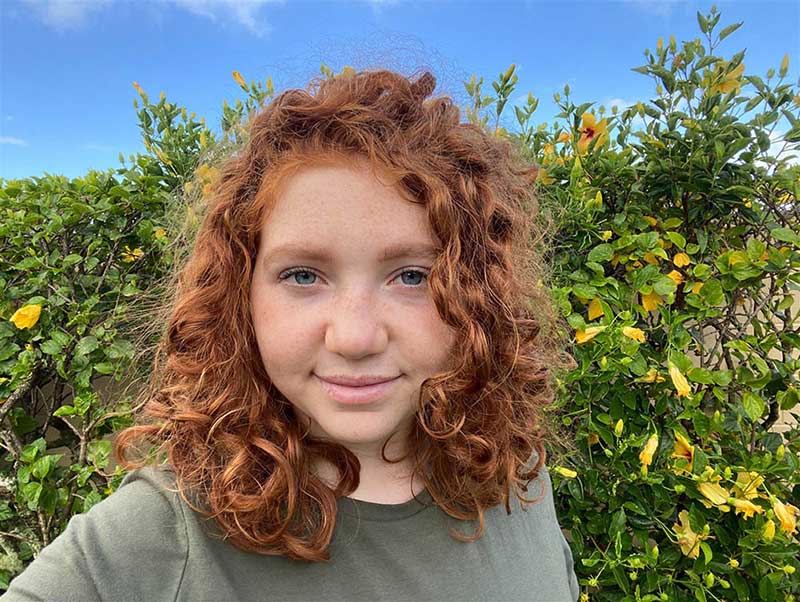Understanding the Diamond Color Grading Chart and Scale | Rare Carat
There are so many ways to assess a diamond’s value, and color is one of the big four. Understanding how gemologists grade diamond colors and how these grades relate to each other will help you pick out your perfect diamond, so let’s get into it!
What is the D to Z Color Grading Scale?
The D to Z diamond color grading scale is broken into five segments. Each grouping correlates to a descriptive word that defines that group. These five descriptive words are: colorless, near colorless, faint, very light, and light. Gemologists and diamond grading labs use what is called a “master stone set” to decide these grades. A master stone set is a lineup of diamonds that have a predetermined color that you can use as a reference point to grade the diamond in question. This set can have every stone, D through Z, or can be every other color grade.

What is the Fancy Color Grading Chart?
For the most part, it doesn’t matter what hue a diamond on the D to Z color scale has, only how much color there is. Pretty straight forward right? The fancy color grading chart, on the other hand, is quite complex. You use the stone’s hue, tone, and saturation to decide the value. The most valuable grade for a fancy diamond is fancy vivid, which describes stones that are full of pigment. On the other side of the chart is fancy light, which represents stones with the least amount of saturation. Stones that fall under the fancy light description are more common, and therefore less valuable than the highly saturated stones. Grading fancy colored diamonds has many dimensions to it, so it can become complex. Not to mention that the diamonds are more valuable and one mistake while grading can cost thousands of dollars!
Breaking Down The D to Z Scale
In each following example, I’m going to use a price example to help get an idea of what each price range looks like. I’ll be using Rare Carat’s handy-dandy search feature to find all of these diamonds. All other value factors expect color will be the same. These are the specifications I'll be using.
- Shape: Round Brilliant
- Carat weight: 1.0 - 1.1ct.
- Cut: Rare Carat Ideal
- Natural
- Clarity: VS2
- Fluorescence: None to Strong
Colorless (D, E, F)
The lucky stones that fall in this group demand top dollar. D color diamonds start off the color chart and represent only the rarest of diamonds, ones with absolutely no color. Only about 8% of diamond customers buy D color diamonds. E and F colored diamonds still have exquisite color but have a slight bit more tint than a D. For example, a D to F color 1 carat VS2 diamond with all other factors the same, is in the starting price range of $5,663 and jumps all the way up to $12,055. These stones reach such a premium price because they are the creme de la creme of colorless (white) diamonds.
Near Colorless (G, H, I, J)
This range of diamond is probably the most commonly seen in jewelry stores and featured in jewelry. While these grades have more color than D, E, and F, it’s nearly impossible to tell them apart without having them side by side. A trained grader’s eye can see the difference, but a random consumer is likely not to notice. For this reason, it’s very common for jewelers and jewelry stores to mostly have these colored diamonds in stock. The color is still high quality without the price being unappealing to most customers. The starting price for these beauties on rarecarat.com is $3,788 and can cruise all the way up to $12,083.
Faint (K, L, M)
Stones that fall under this grade are more common in nature, but less common in jewelry. These grades are where you’ll start to recognize color. Rare Carat only offers down to a K color, but if you are looking for a diamond beyond this color, you can chat with one of our gemologists to find out what buying options would be available. Pricing for K colored diamonds is between $2,864 and $4,763
Very Light (N, O, P, Q, R) and Light (S, T, U, V, W, X, Y, Z)
Although very light and light are two different categories, they are both regarded as the same in value. A blanket statement for diamonds that fall in these ranges is that they are less sought after and the prices don’t differ much amongst these grades.
Why Does the D to Z Diamond Color Grading Scale Start at D?
If you’re like me, you probably wondered why the D to Z color scale starts at D instead of A. That would make more sense, being the beginning of the alphabet and all. Before the 1950’s, there were many ways color was measured, so many ways in fact that it became very confusing. One person would compare the color to letters, another would relate to numbers and some would even use roman numerals to express their diamond’s color. These methods were very relative and not efficient at all. These loosey goosey systems were put to an end when the Gemological Institute of America introduced the D to Z color scale. Previously, when comparing diamond color to letters, jewelers would use A, B, and C. Starting at D was a way to ensure that there was no overlap with any previous system of grading and was considered a fresh start to how we grade diamond color.
Much consideration goes into diamond color but in my opinion, the biggest takeaway is that G, H, I, and J color is the best range to be shopping in. They are high quality, beautiful and affordable (for diamonds, that is).

